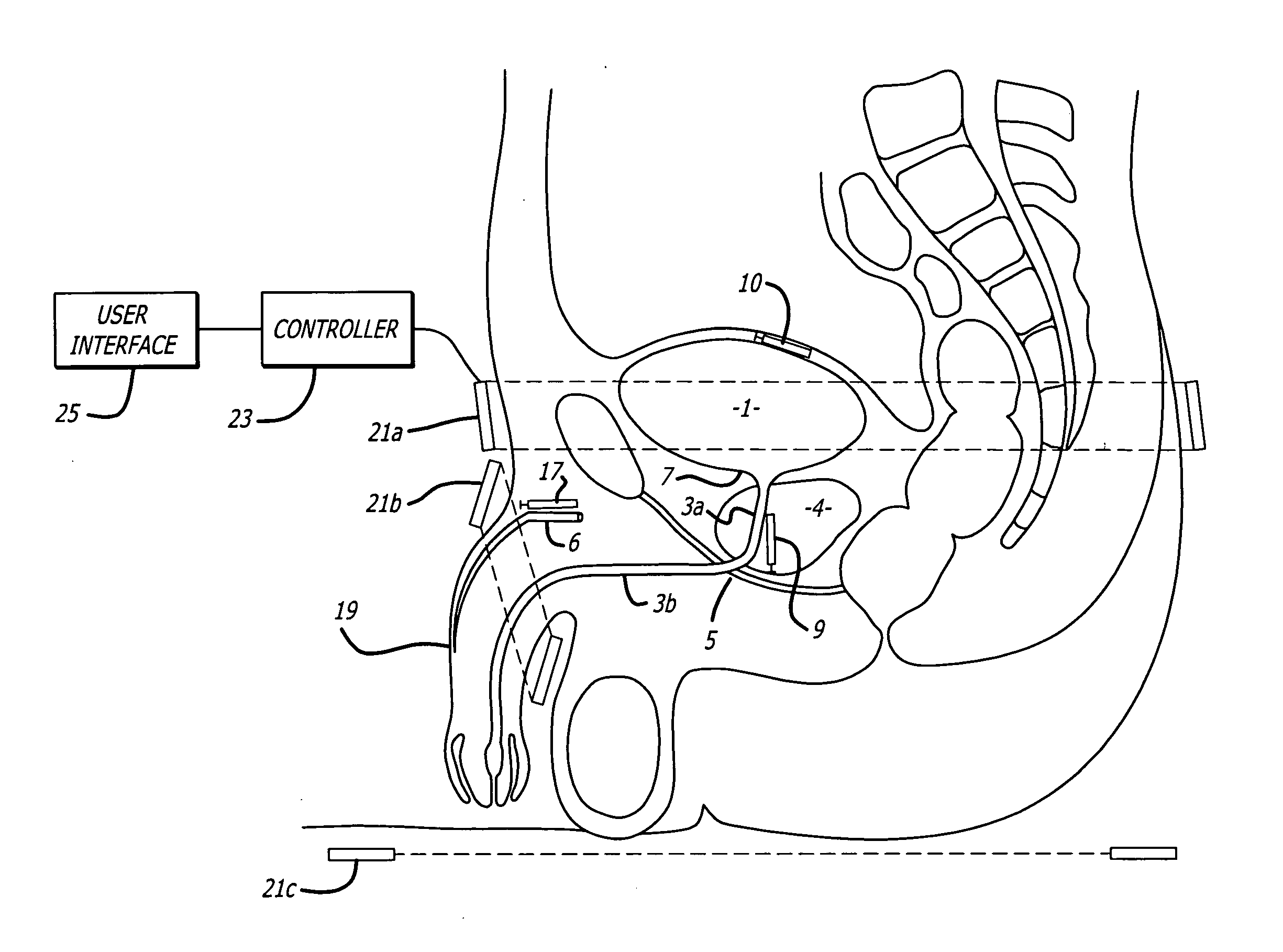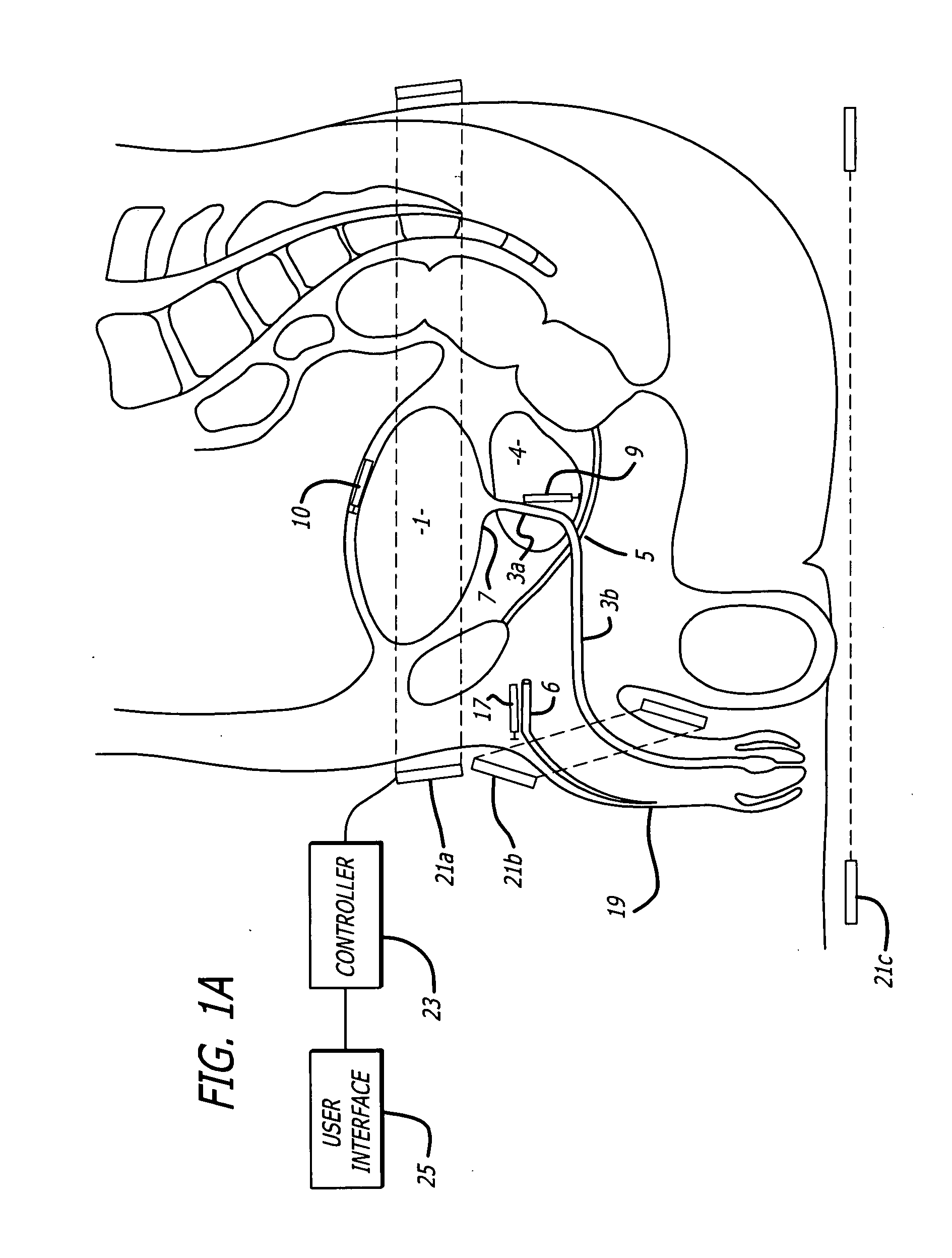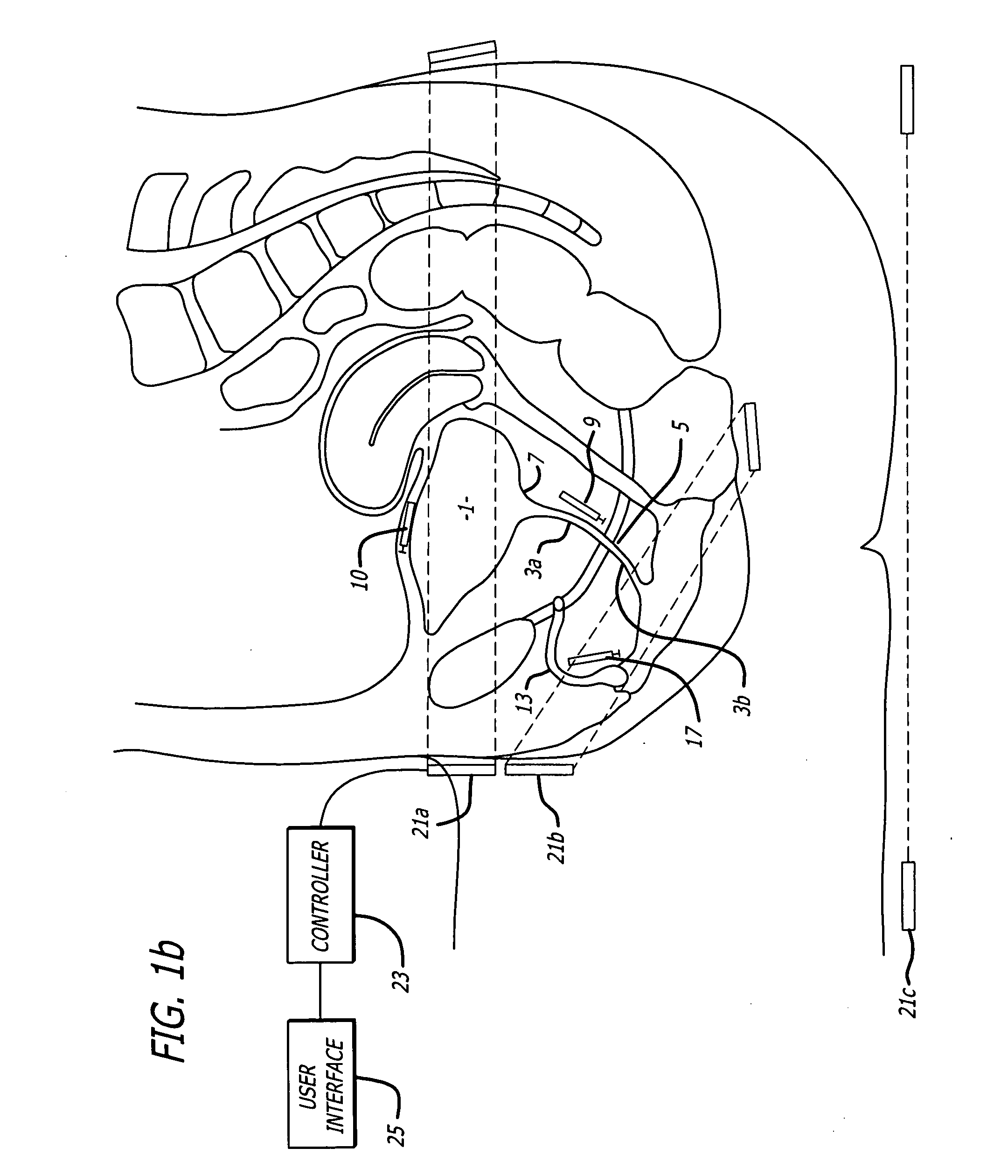Method and apparatus for the treatment of urinary tract dysfunction
a technology for urinary tract dysfunction and treatment methods, applied in the field of urinary tract dysfunction treatment, can solve the problems of urinary incontinence, incontinence interferes with the social life and health care of patients, and patients are unable to sense or respond voluntarily, so as to avoid damage to electrodes and surrounding tissues, accurate localized and precisely graded electrical fields
- Summary
- Abstract
- Description
- Claims
- Application Information
AI Technical Summary
Benefits of technology
Problems solved by technology
Method used
Image
Examples
Embodiment Construction
[0062] While the specification describes particular embodiments of the present invention, those of ordinary skill can devise variations of the present invention without departing from the inventive concept.
[0063]FIGS. 1A and B are schematic diagrams displaying the components of the urinary tract and a combination of positions of microstimulators / sensors in one embodiment of the invention in a male (A) and female patient (B), respectively. Referring to FIGS. 1A and 1B, the main anatomical components of the lower urinary tract include the bladder (1), the urethra (3) and the external urethral sphincter (5), which is comprised of the musculature of the pelvic floor and surrounds the urethra (3) as it passes through this musculature. The portion of the urethra (3) that is proximal to the external urethral sphincter (5) is the proximal urethra (3a) and the portion that is distal to the external urethral sphincter (5) is the distal urethra (3b). Near the exit of the bladder (1) into the ...
PUM
 Login to View More
Login to View More Abstract
Description
Claims
Application Information
 Login to View More
Login to View More - R&D
- Intellectual Property
- Life Sciences
- Materials
- Tech Scout
- Unparalleled Data Quality
- Higher Quality Content
- 60% Fewer Hallucinations
Browse by: Latest US Patents, China's latest patents, Technical Efficacy Thesaurus, Application Domain, Technology Topic, Popular Technical Reports.
© 2025 PatSnap. All rights reserved.Legal|Privacy policy|Modern Slavery Act Transparency Statement|Sitemap|About US| Contact US: help@patsnap.com



